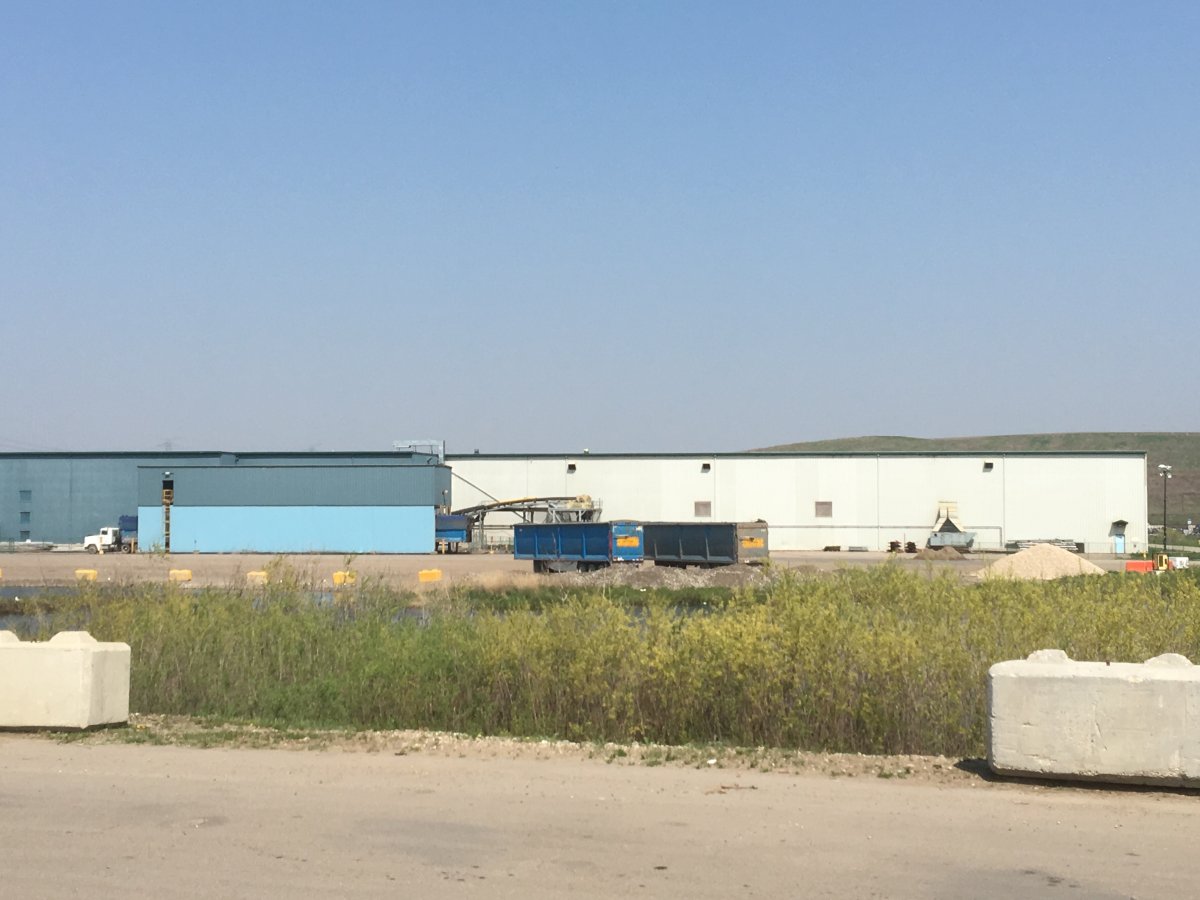Edmonton’s short-term solution for composting waste took a big statistical setback last year, and a new report suggests the long-term answer is not going to come as quickly as first hoped.

But when it comes, it will save money — an estimated 13.8 per cent.
A brand new business case for Edmonton’s composting facility released Tuesday proposes a P-3 (public-private partnership) model.
It means the city’s waste diversion rate will remain well below its aspirational target of keeping 90 per cent of waste out of the landfill since the completion date isn’t until 2025.
A 150-page business case recommends going a P3 route to replace the old facility that housed the anaerobic digester that rotted. It made the building unusable and was closed in the spring of 2019.

The composter only serves part of the year as a short-term solution, as piles of organic waste is spread as windrows, and bakes in a field, soaked only by sun, wind and rain.
“Private sector financing will allow the Waste Services Utility to postpone capital payments until the facility is operational, thus allowing a more gradual accumulation of funds to finance the facility,” the report said, in justifying the P-3 approach.
Since the cost is in the millions of dollars, city council will review several reports on the feasibility of the project in private at its meeting next Monday.
A major topic they’ll be talking about is using the composter to generate natural gas as a by-product, “which may provide an opportunity to offset conventional natural gas demand for city operations and associated greenhouse gas emissions.”
An audit of the 2019 diversion rate shows only 21 per cent of what we threw out avoided the landfill. That’s down 15 per cent from 2018, and less than half of the short-term target.
Mike Labrecque, the branch manager of Waste Services, said the city is working towards 50 per cent.
“We knew obviously with the suspension of the activity at the Edmonton Composting Facility it’s going to be difficult for us to meet that 50 per cent.
“We’re going to do everything we can to do so. When the digestion facility comes online in the latter part of June, that’s going to help us out as well.”
He said annual testing for the digester begins this weekend.
“There is a path to 90 per cent, our strategy speaks to that,” Labrecque said.
“It’ll begin with operating our anaerobic digester starting in June. It’ll begin with the strategy of moving to four-stream separation starting in the spring of next year.”
The curb separation program was been tested in 8,000 homes in 2019 and was to begin this year, until the pandemic delayed the launch for a year.

Councillor Andrew Knack is not shocked the diversion numbers are as bad as they are.
“It’s not a surprise — it’s still not great,” he told Global News. “Understanding that what occurred the processing facility was really something that was unexpected.
“I can’t fault them for the current numbers. It’s just the reality of what we’re in right now.”
When council talks about the new composter, the message will be that the city studied all possible methods of churning out the product.
“Administration visited dry and wet digestion facilities and determined that both technologies are feasible, which maximizes opportunities for the private sector to propose an innovative solution that will save the city money.”
Knack said he anticipates the compost as a finished product will help on the return on investment too.
“We know that if done well, there’s the potential addition of further value after the fact.”


Comments